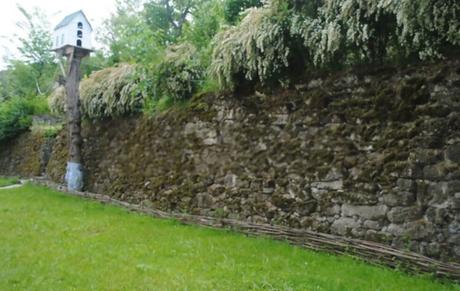
Revetments are essential for protecting the footings of a building and stabilizing the wall. They also help to protect a slope from eroded soil, reduce erosion and provide drainage. This is due to their ability to direct water away from the footings, which prevents pooling, weeps, and sometimes even waterfalls. Here are some tips on how you can prepare for your own rock revetment construction project!
Rock Revetment:
Rock revetment, also known as artificial bedrock, is a type of earthwork used to protect slopes and foundations from erosion. It is made up of large pieces of rocks positioned vertically and horizontally along the slope to create a barrier against water and wind. Rock revetment can be built in a variety of shapes, sizes, and colors to match the surrounding landscape. You can also consider hiring a professional rock revetment construction service. They will be able to design and install the rocks effectively, ensuring that your structure remains safe.
Benefits of Rock Revetment:
Rock revetment is a popular erosion prevention technique because it is effective at protecting slopes and foundations from water, wind, and sedimentation. Here are some benefits of using rock revetment:
- It stabilizes slopes and prevents them from eroding.
- It can help reduce soil loss.
- Likewise, it improves drainage by redirecting runoff away from the slope.
- It can provide aesthetic value to the landscape.
- Furthermore, it can help protect sensitive archaeological sites or other valuable resources.
- It is relatively easy to install and maintain.
- It is affordable compared to other erosion control measures such as riprap or groins.
How To Find A Piece of Land
The benefits of rock revetment are numerous. Here are just a few:
- Rock revetment protects homes and property from erosion.
- It creates a natural buffer against flooding.
- It stabilizes slopes and prevents them from becoming unstable.
- It can help conserve water resources by reducing the amount of runoff.
Safety Precautions For Rock Revetment Construction
Rock revetment is a popular and effective way to prevent erosion on slopes. It is also a great way to create a safe and attractive environment for people, pets, and wildlife. Here are some safety precautions to keep in mind when building your rock revetment:
- Always use a qualified contractor. Revetment construction can be tricky, and inexperienced workers may not be able to handle the heavy equipment needed for the project.
- Make sure the surface you’re working on is stable. If the ground is wet or has any other potential stability issues, make sure to check with your contractor before starting work.
- Plan your route carefully. The final look of your revetment will depend on the placement of your rocks and boulders. Plan your route ahead so that you don’t end up cutting into vulnerable areas or damaging property in the process.
- Use caution when climbing onto your rock revetment. Be aware of wet areas that could give you an unstable footing, and use protective gear if necessary.
- Clean up after yourself. Once you’re finished working on your rock revetment, make sure to clean up any debris left behind. This will help ensure that the site is safe for everyone who uses it.
Fix It Right the First Time
Rock revetment is a great way to prevent erosion and protect soils in your landscape. By installing a rock revetment, you can reduce the number of times you have to repair damage done by Mother Nature. Here are some of the benefits of using rock revetment in your landscape:
- Reduce the frequency of soil erosion: Rock revetments help to stabilize soils and keep them from eroding. By stabilizing the soil, you can reduce the amount of sediment that is carried away by water.
- Prevent water damage: A rock revetment can help to prevent flooding in your landscape. By keeping water from pooling on the surface, you can decrease the chance of water damage to plants and landscaping.
- Improve plant health: By shielding plants from wind and weather, a rock revetment can help improve their health. This is especially important for plants that are susceptible to cold weather damage, like roses.
- Preserve historic features: A rock revetment can also help protect historic features in your landscape. By preventing erosion, a rock revetment can keep important structures safe from destruction.
Get The Right Tools
Rock revetment is an important part of any storm-resistant design, and it can be a great way to reduce flood damage. To build a rock revetment, you’ll need the right tools and supplies. Here are some of the benefits of using rock revetment:
Reduce Flood Damage: Rock revetment can help reduce the effects of flooding on your property. By building a wall of rocks or other sturdy material, you can help protect your house from water damage and erosion. Storm surge and high waves can easily push floods over a property’s levees and into your home, but a rock revetment can stop this from happening.
Keep Roads Open: A rock revetment also helps keep roads open in bad weather. If there is flooding on one side of the road, for example, a rock revetment will help prevent the water from reaching the other side. This can prevent dangerous driving conditions and help keep businesses running.
Build A Resilient Roofscape: A well-designed roofscape can be one of the most resilient features of your home. A rock revetment can help protect your roof from heavy rains, snowfall, and windblown debris. This can significantly reduce the need for maintenance and repairs.
In Conclusion, when it comes to protecting your home against heavy rains and flooding, a rock revetment is a must-have feature. Most of these systems will include other features to make them more resilient, too-such as small dams that can raise the water level around your home or large retaining walls that can hold water back from your driveway.
Prepare The Site
If you’re looking to improve the look and feel of your property, a rock revetment can be a great way to do it. A revetment is a barrier composed of rocks that helps protect soil and vegetation from erosion. It can also help reduce wind and rain damage, and improve water infiltration. Here are some of the benefits of using a rock revetment:
- Protects soil and vegetation from erosion
- Reduces wind and rain damage
- Improves water infiltration
Build Your Rock Revetments
There are many benefits to building rock revetments, both practical and aesthetic. A rock revetment can help prevent erosion, provide a natural defense against floods, and can add interest and beauty to your property. Here are five reasons to build a rock revetment:
- Protect Your Property From Erosion: A rock revetment can help protect your property from erosion caused by rain and snow. By creating a barrier between the earth and the water, you can keep soil and rocks from being carried away by the current.
- Defend Against Flooding: A rock revetment can also help protect your property from flooding. By creating a natural dam, you can hold back water during heavy rain or snowstorms. This will help prevent damage to homes and businesses, and may even save lives.
- Enhance Your Property’s Appearance: A well-designed rock revetment can add interest and beauty to your property. By using natural materials like rocks and earth, you can create a unique landscape feature that will stand out from the rest.
- Provide a Natural Defense Against Storms: A well-designed rock revetment construction can help protect your property from storms like hurricanes
Putting It All Together
The benefits of rock revetment are plentiful. Here are just a few:
- It can help prevent erosion and protect against floods.
- It keeps the soil in place, preventing it from blowing away in strong winds.
- Rock revetment also helps to keep creeks and rivers flowing in their natural course, helping to maintain ecosystems.
- Rock revetment can also provide shade for areas that need it, sheltering people and animals from the sun or wind.

